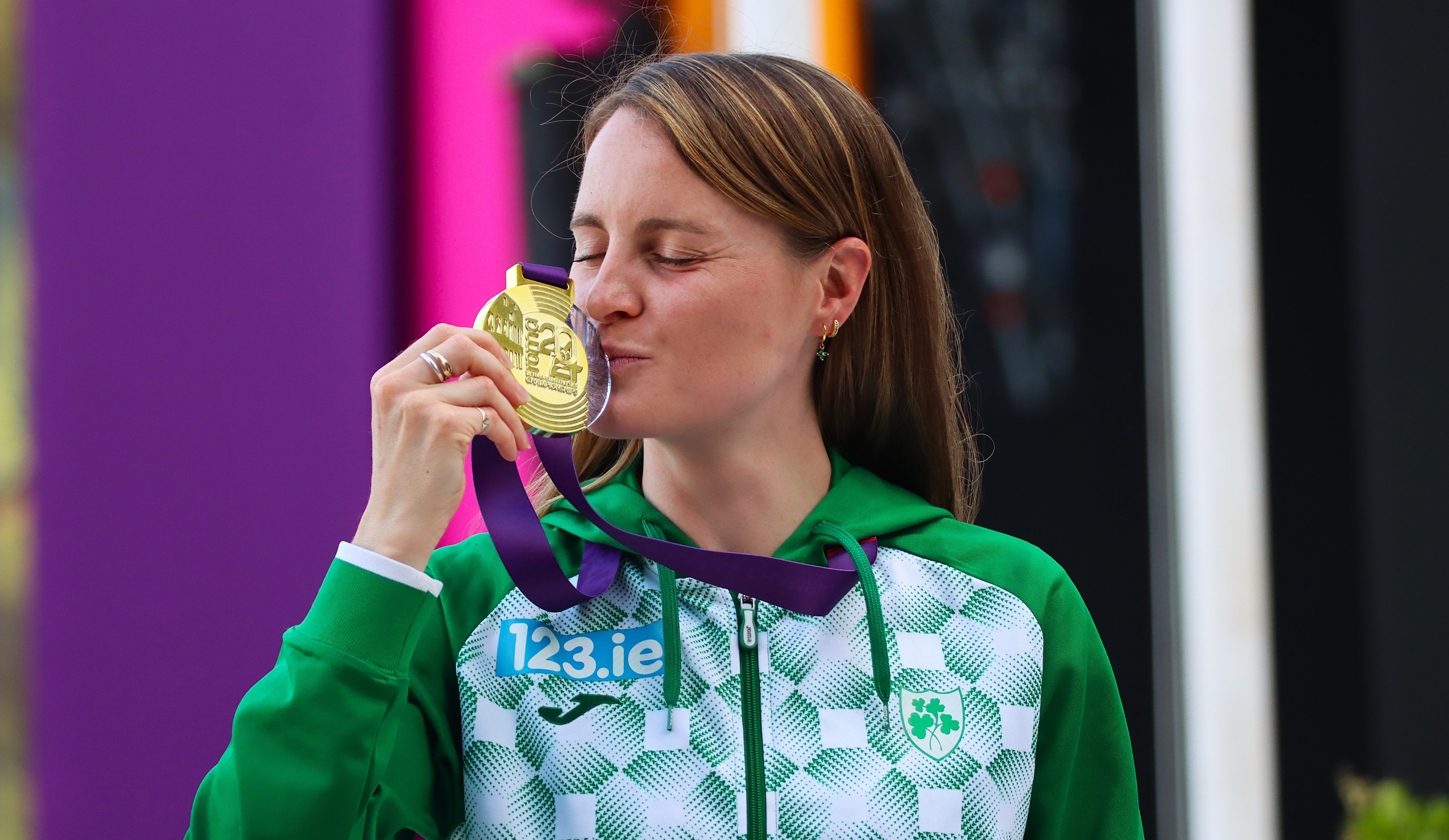Kyoto Marathon

October 11, 2024
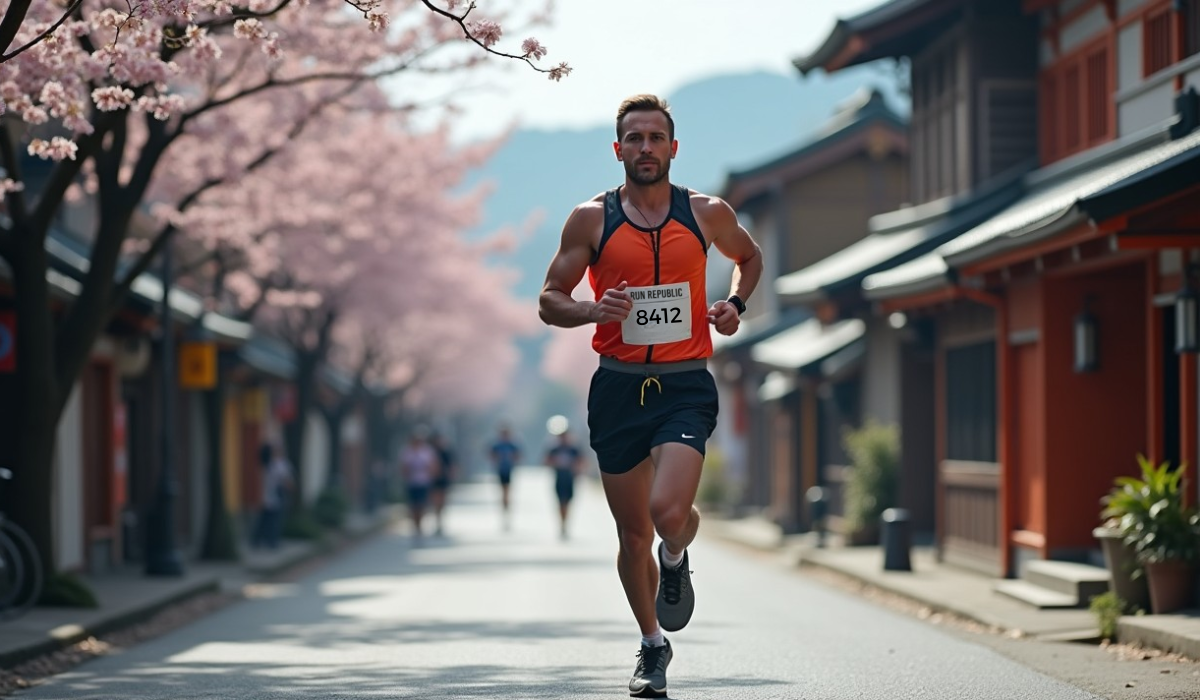
Welcome back to another edition of Run Republic Wanderlust!
This time, we’re heading to the Far East for the Kyoto Marathon, set to take place on February 16th, 2025. Known for its stunning blend of ancient tradition and natural beauty, Kyoto offers runners a chance to experience Japan’s cultural heart while tackling one of the most scenic marathons in the world. From its historic temples and shrines to the breathtaking views of the surrounding mountains, Kyoto is a city that perfectly balances the old with the new.
The Kyoto Marathon also presents a more realistic alternative to the Tokyo Marathon, which takes place the following month. Unlike Tokyo, where entry is determined by a ballot or through expensive sports travel packages, Kyoto allows for direct entry without breaking the bank. This gives you the peace of mind of guaranteed participation and a more intimate race experience.
Whether you’re drawn to the serene Zen gardens, the vibrant streets of the Gion district, or simply the charm of Japan’s ancient capital, this February event promises a memorable adventure through Kyoto’s rich cultural landscape.
Welcome to Kyoto
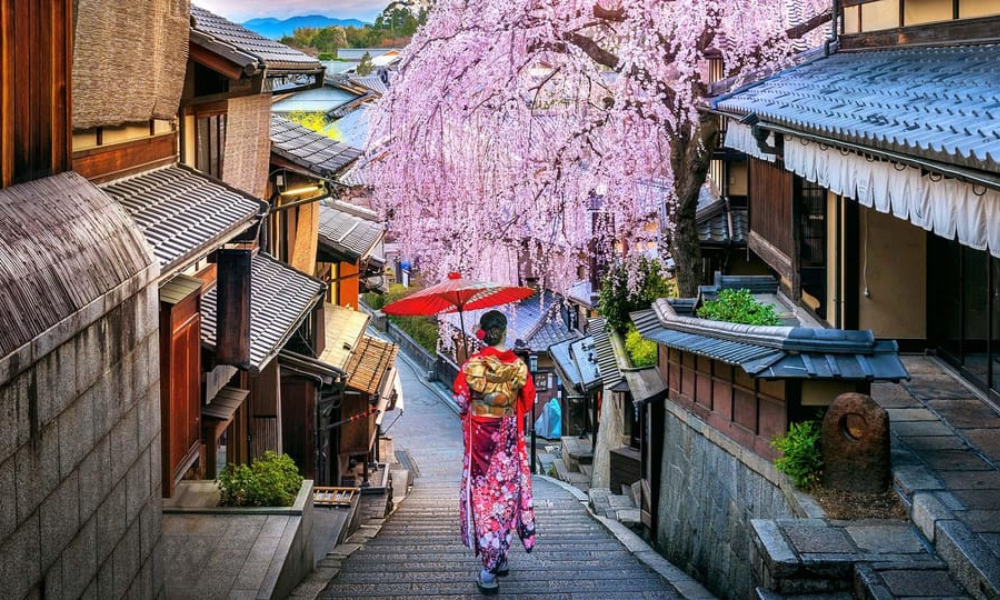
Nestled in the heart of Japan’s main island, Kyoto is a city that blends the ancient with the modern. Known for its iconic temples, serene Zen gardens, and centuries-old shrines, Kyoto offers a glimpse into the soul of Japan's rich cultural heritage. You can wander through the historic streets of the Gion district, famous for its geisha, or marvel at the peaceful beauty of the Golden Pavilion.
If you're flying in from Ireland or the UK, the most convenient route is through Tokyo, Japan's bustling capital. After exploring Tokyo's dynamic mix of futuristic skyscrapers, vibrant neighbourhoods, and cutting-edge culture, you can easily make your way to Kyoto via the Shinkansen Bullet Train, which takes around three hours. This seamless connection between Tokyo and Kyoto allows you to experience the best of both worlds, start with the fast-paced energy of Tokyo and then enjoy the tranquil, culturally rich atmosphere of Kyoto.
With its historical landmarks, natural beauty, and famous matcha tea, Kyoto provides the perfect backdrop for your marathon adventure. The Kyoto Marathon offers runners a scenic route through the city’s most picturesque areas, making it a truly memorable race.
The Race
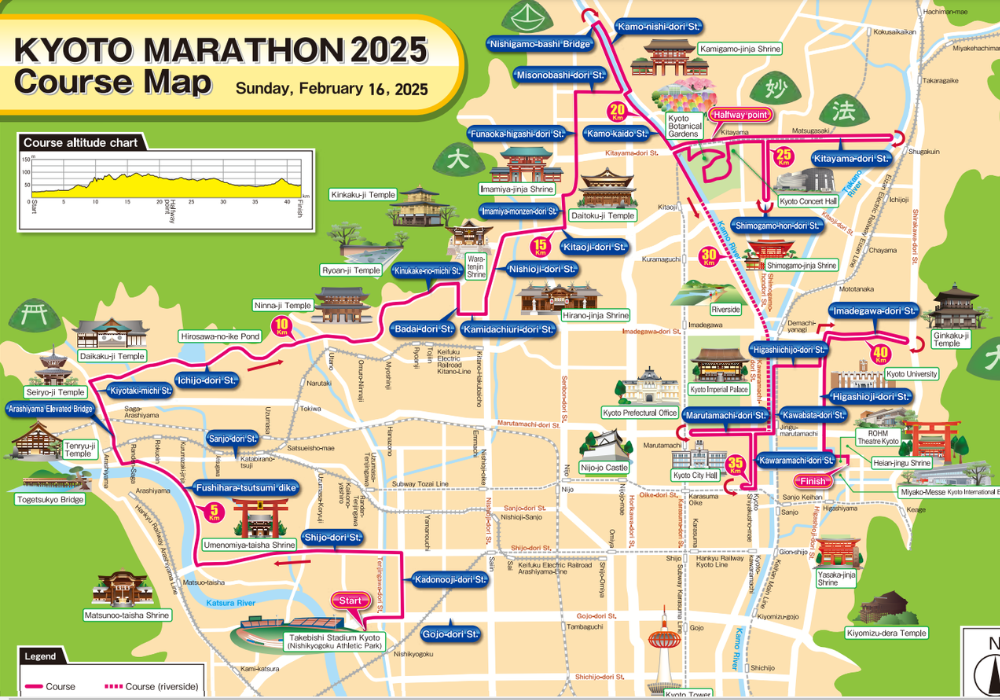
The Kyoto Marathon kicks off at 9:00 a.m. from Takebishi Stadium, offering runners a chance to explore the historical and cultural beauty of one of Japan's most iconic cities. The course winds through some of Kyoto’s most renowned landmarks, making this race a unique journey through centuries of tradition and stunning natural beauty.
Runners will pass by famous sites such as the Seiryo-ji Temple and the serene Ninna-ji Temple, both UNESCO World Heritage Sites, before continuing towards the picturesque Kyoto Botanical Gardens just before the halfway point. As the race progresses, you’ll take in the grandeur of the Shimogamo Jinja Shrine, one of Kyoto’s oldest and most celebrated shrines, before circling around the historic Kyoto Imperial Palace.
The final stretch takes you past Kyoto City Hall and Kyoto University, with the marathon finishing in spectacular fashion near the Heian Jingu Shrine, a stunning example of Kyoto’s imperial history.
In terms of elevation, the course presents a few challenges. There’s a noticeable climb between miles 5 and 7, but after that, the terrain becomes more undulating, keeping things interesting as you navigate Kyoto's streets. Just when you think you're nearing the finish, another climb at around mile 24 (38 km) adds one final test of endurance. However, the race finishes on a welcoming downward slope near the Heian Jingu Shrine, providing a fast and satisfying end to your marathon effort.
Weather in Kyoto in February
Kyoto’s unique geography, situated in a basin surrounded by mountains, gives it a distinct climate, with hot summers and chilly winters. In February, the weather is at its coldest, but still manageable for running, with an average high of 10°C during the day and lows dipping to around 2°C at night.
While snow is possible during this time of year, it’s rare for it to accumulate on the ground, making it unlikely to disrupt race day. Even with similar temperatures to other parts of Japan, the cold in Kyoto can feel more pronounced due to factors like humidity, wind, and the surrounding mountains, so it's advisable to dress in layers for your race preparations and any sightseeing afterward.
Things to Do in Kyoto and Beyond
While the Kyoto Marathon is undoubtedly the main event, there’s much more to explore in Kyoto and the surrounding regions of Japan. Whether you're seeking history, culture, or a bit of adventure, this part of Japan has something for every traveller. Here are the key destinations to include in your marathon journey.
Tokyo: A Modern Metropolis with a Historic Heart
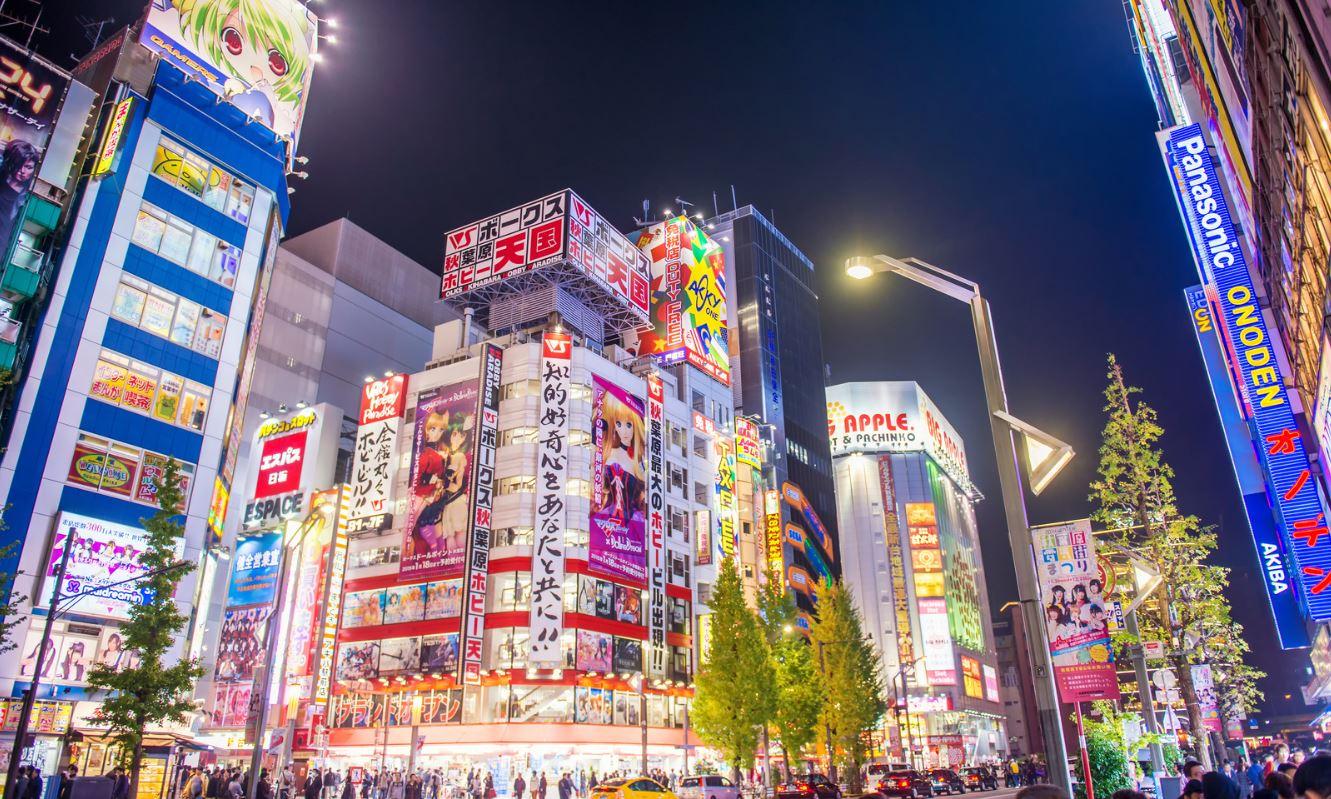
If you’re planning to start your journey in Japan’s capital, Tokyo offers an unforgettable mix of modern innovation and traditional culture. Wander through the bustling streets of Shibuya and experience the iconic Shibuya Crossing, or take in the vibrant shopping districts of Shinjuku and Harajuku, famous for their futuristic architecture and eclectic fashion scenes.
For a more tranquil experience, explore Meiji Shrine, located in a peaceful forest in the heart of the city, or visit the Imperial Palace for a glimpse of Japan's historical roots. Tokyo also boasts numerous museums, like the Tokyo National Museum and the Mori Art Museum, as well as breathtaking views from the Tokyo Skytree.
Tokyo is just a three hour ride from Kyoto via the Shinkansen Bullet Train, making it an easy and efficient starting point for your marathon adventure.
Kyoto: Japan’s Cultural Treasure
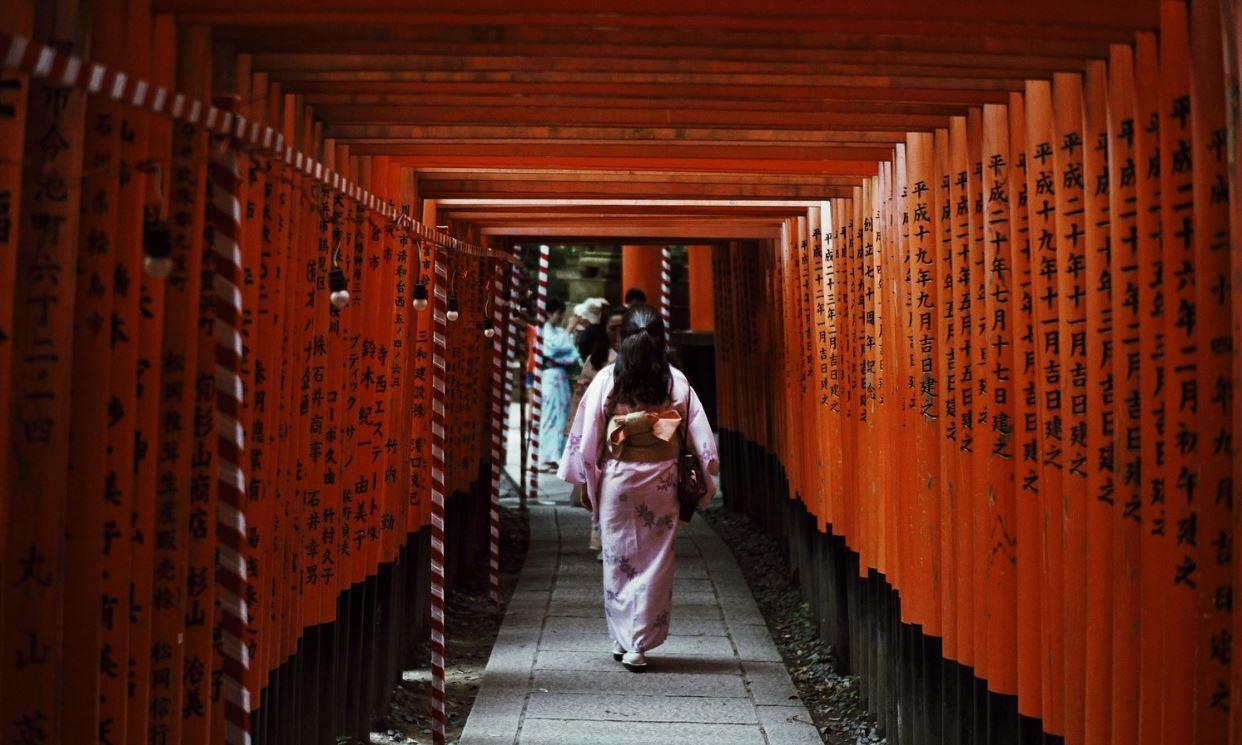
Once you arrive in Kyoto, you’ll find yourself surrounded by a rich tapestry of ancient temples, serene gardens, and historic landmarks. The city is a haven for those looking to dive into Japan’s cultural history.
A must-visit is the Fushimi Inari Shrine, famous for its thousands of red torii gates that wind their way up the mountain, offering incredible views of the city below. The Kinkaku-ji (Golden Pavilion) and Ginkaku-ji (Silver Pavilion) are also top attractions, showcasing the elegance of Japanese temple architecture. For a more tranquil experience, explore the Arashiyama Bamboo Grove, where towering bamboo stalks create a natural, otherworldly atmosphere.
Kyoto is also known for its traditional tea houses and the charming Gion district, where you can catch glimpses of geisha moving between engagements. Whether you’re interested in ancient shrines or serene gardens, Kyoto’s beauty will make your marathon trip truly unforgettable.
Mount Fuji: A Cautionary Adventure
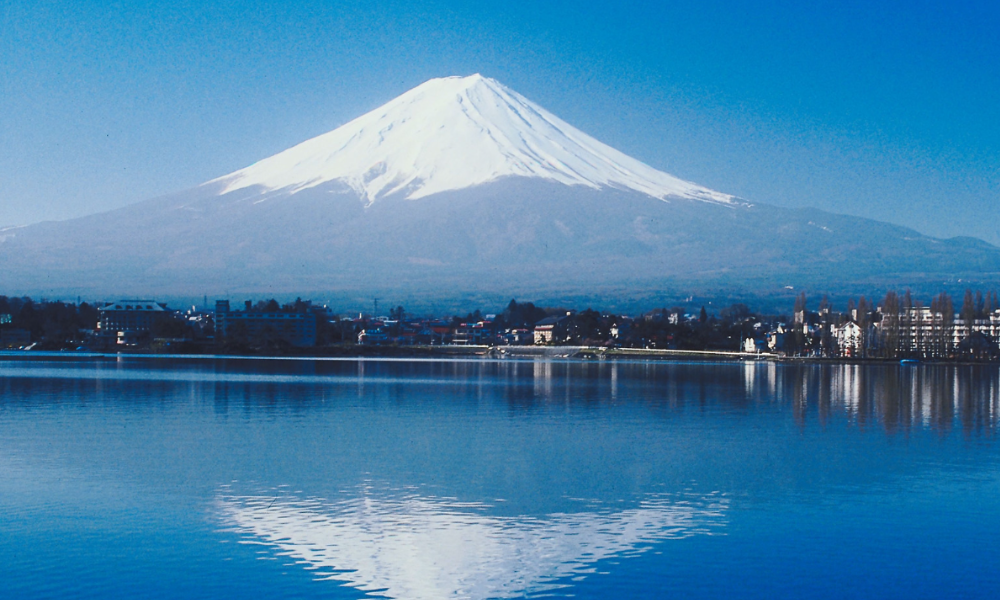
One of Japan’s most iconic landmarks, Mount Fuji, is often on the bucket list for many travellers. However, for marathon runners, it’s important to approach this with caution. Climbing Mount Fuji is no small feat, and while it’s possible to take on the challenge a week or so after the race, it can be extremely demanding, particularly after a marathon.
If you do wish to make the trip, Mount Fuji is best experienced as a day trip from Tokyo, and during climbing season (July to early September). Outside of this period, you can still enjoy stunning views of the mountain from the Fuji Five Lakes region, or take a more leisurely visit to the area’s hot springs, which offer incredible views of the mountain without the physical exertion.
Day Trip to Nara: The City of Deers
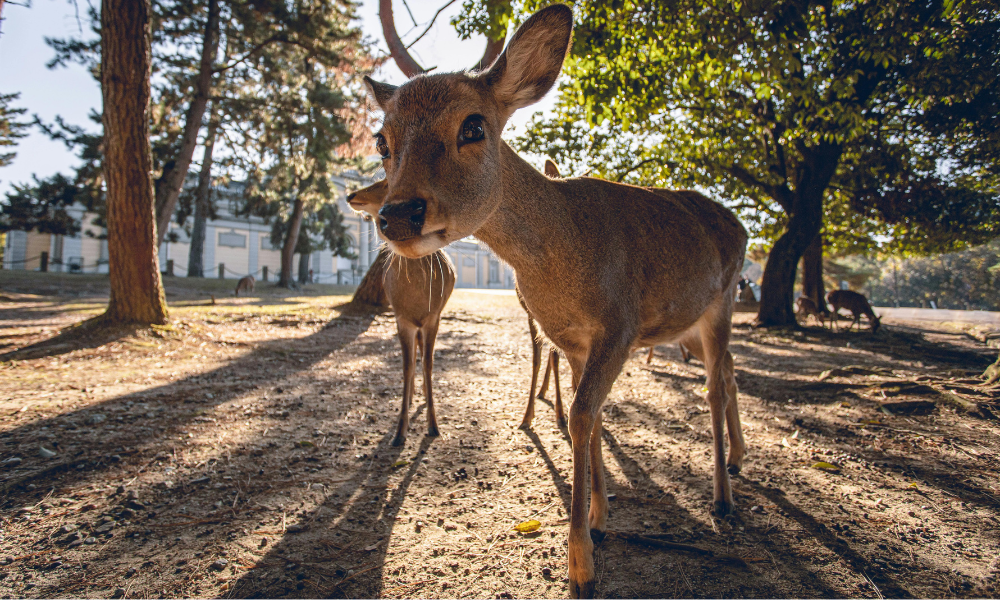
Just a short train ride from Kyoto, Nara is the perfect day trip for those looking to explore beyond the city. Nara is home to the famous Nara Park, where friendly deer roam freely and are considered sacred. Visitors can purchase special deer crackers to feed them—a unique experience for animal lovers.
Nara is also home to some of Japan's oldest and most significant temples, including Todai-ji, which houses the world’s largest bronze statue of the Buddha, and the beautiful Kasuga Taisha Shrine, known for its thousands of bronze and stone lanterns. This charming city provides a peaceful escape and is a must-visit for history enthusiasts.
Optional Day Trip to Hiroshima: Reflecting on History
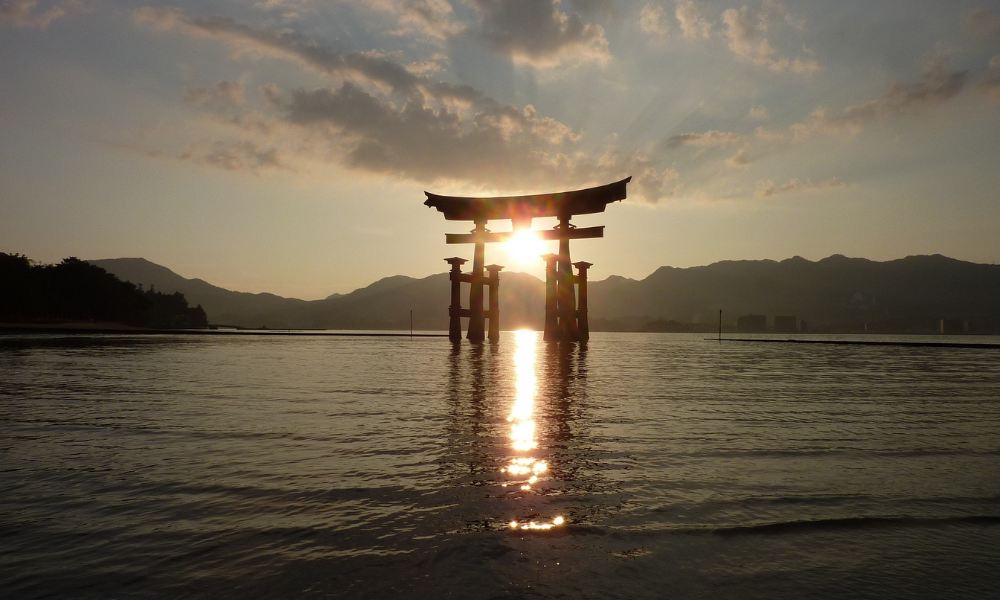
If time allows, an optional day trip to Hiroshima offers a deeply moving experience. Known for the tragic events of World War II, Hiroshima is a city that has risen from its past with a message of peace. Visit the Peace Memorial Park and the Atomic Bomb Dome, and take time to reflect at the Hiroshima Peace Memorial Museum.
For a more peaceful excursion, visit the nearby island of Miyajima, famous for its "floating" torii gate at Itsukushima Shrine, one of Japan’s most iconic views. While a bit further afield, Hiroshima offers a powerful and reflective addition to your marathon journey.
Getting Around Japan
In Japan, the transport links are exceptional, making it incredibly easy to navigate both within cities and between them. Unlike some of the other destinations in this series, renting a car isn’t a necessity here.
The Shinkansen connects most major cities, and the trains are known for their punctuality and speed, making long-distance travel a breeze. Within cities, the Tokyo Metro and Kyoto Subway offer reliable and extensive coverage, allowing you to explore without needing to worry about driving or parking. Public transport is highly efficient, clean, and easy to navigate even for international visitors.
That said, if you prefer the flexibility of working to your own schedule or planning day trips off the beaten path, renting a car is still an option. Conveniently, Japan drives on the left-hand side of the road, just like Ireland and the UK, which makes the transition easier. Japan is also known for its extremely safe roads and polite driving culture, making it a stress-free place to explore by car. All major international
Accommodation
Where to Stay in Tokyo
Tokyo offers a wide range of accommodations to suit all preferences. Here are some top recommendations for where to stay during your visit.
Luxury Hotels
- The Tokyo Station Hotel – Located right in the heart of the city and directly connected to Tokyo Station, this hotel offers both convenience and classic European elegance. Perfect for those looking to experience Tokyo in style.
- Kimpton Shinjuku Tokyo – For something more contemporary, the Kimpton Shinjuku provides luxurious, modern accommodations with a chic design, right in the vibrant and energetic Shinjuku district.
- Andaz Tokyo Toranomon Hills – A high-end hotel with stunning views of the city skyline. Located in the Toranomon Hills district, it offers easy access to many of Tokyo's key attractions.
Mid-Range/Budget Hotels
- Tokyu Stay – Offering comfortable rooms and modern amenities, this hotel chain is known for its convenience and affordability, with locations across Tokyo, including Shinjuku and Ginza.
- Toyoko Inn – Known for its clean and simple rooms, this popular budget-friendly chain provides solid value and is well-located for travellers looking to explore Tokyo.
- Book and Bed – A quirky, affordable option that combines a library and a hostel, perfect for book lovers. Located in Ikebukuro, it's a unique experience with easy access to transport links.
- Nahaga Hotel Ueno – Situated near Ueno Station, this budget-friendly hotel offers simple, comfortable rooms and is conveniently close to Ueno Park and its museums.
Where to Stay in Kyoto
Kyoto offers a range of accommodation options to suit every traveller's needs. Here are some top recommendations for your time in the cultural heart of Japan.
Luxury Hotels
- Nazuna Kyoto Tsubaki Street Hotel – A stunning ryokan-style hotel, Nazuna Kyoto offers an intimate and authentic experience, blending modern luxury with traditional Japanese hospitality. Located in a quiet part of Kyoto, it's perfect for those seeking peace and comfort.
- Hotel Akura Kyoto – Situated in the heart of the city, Hotel Akura provides a luxurious base for exploring Kyoto. The rooms are sleek and modern, with a minimalist design that reflects Japanese aesthetics, making it a serene and stylish option for visitors.
- Hyatt Regency Kyoto – Known for its blend of modern luxury and traditional Kyoto charm, the Hyatt Regency offers spacious rooms, excellent service, and is ideally located near some of the city's key historical sites, including Sanjusangendo Temple.
Mid-Range/Budget Hotels
- Sakura Terrace The Gallery – Located close to Kyoto Station, this modern, mid-range hotel offers stylish, comfortable rooms with excellent amenities, including a public bath and a relaxing lounge area. It's a great option for those who want to be close to transport links while enjoying comfort.
- The Royal Park Hotel Kyoto Sanjo – Situated near the Kamo River, this mid-range hotel combines comfort with convenience. With modern rooms and close proximity to attractions like Pontocho Alley, it’s a fantastic base for exploring the city.
- Hotel Anteroom Kyoto – A stylish, artsy option that merges hotel and gallery concepts, Hotel Anteroom is perfect for travellers seeking something a little different. The hotel features contemporary design and is located in the quieter southern part of the city, offering a unique and affordable stay.
- Dormy Inn Premium Kyoto Ekimae – Just a short walk from Kyoto Station, this budget-friendly hotel offers great value with clean, comfortable rooms and the added bonus of a public bath. Its convenient location makes it an ideal choice for those who want easy access to transport while keeping costs low.
Suggested Itinerary for Your Japan Marathon Trip
Here’s a suggested itinerary to help you make the most of your race trip and exploration of Japan:
Day 1 (Sunday, February 9th): Fly to Tokyo
- Depart Dublin on a Sunday flight bound for Tokyo. Expect around 13 to 14 hours of flight time due to current flight paths avoiding Russian airspace.
Day 2 (Monday, February 10th): Arrival in Tokyo
- Arrive in Tokyo and check into your hotel. Allow time to rest and recover from jet lag.
- If you're up to it, take a light stroll in the local area, perhaps around Shibuya to get your first taste of Tokyo.
Day 3 (Tuesday, February 11th): Exploring Tokyo – Shrines and Shopping
- Meiji Shrine: Start your first full day in Tokyo with a visit to this beautiful shrine located in Yoyogi Park.
- Harajuku & Takeshita Street: Walk through Harajuku’s famous shopping street, and explore the fashionable Omotesando area.
- Shibuya Crossing: Head to Shibuya, visit the Hachiko Statue, and experience the bustling energy of the world’s busiest crossing.
- Shibuya Sky: In the evening, enjoy panoramic views of the city from the Shibuya Sky observation deck, ideally around sunset.
Day 4 (Wednesday, February 12th): Tradition Meets Modernity
- Senso-ji Temple: Visit the oldest temple in Tokyo, located in Asakusa, and try your luck with o-mikuji (fortunes).
- Ueno Park: Spend some time exploring this beautiful park, and if you have the chance, visit one of its museums.
- Akihabara: In the afternoon, dive into the world of anime, video games, and arcades in Tokyo’s Electric Town.
Day 5 (Thursday, February 13th): Final Day in Tokyo – Iconic Landmarks
- Tokyo Imperial Palace: Take a guided tour of the palace grounds and learn about the history of Japan’s capital.
- Zōjō-ji Temple & Tokyo Tower: Visit this serene temple and take a photo near the iconic Tokyo Tower.
- Roppongi Museums: Explore art and culture in the Mori Art Museum or any of the other top galleries in the area.
Day 6 (Friday, February 14th): Travel to Kyoto
- Spend the morning enjoying your last few hours in Tokyo.
- In the afternoon, board the Shinkansen Bullet Train for the journey to Kyoto (around 2.5 hours).
- Arrive in Kyoto, check into your hotel, and enjoy a quiet evening to relax.
Day 7 (Saturday, February 15th): Rest and Light Sightseeing in Kyoto
- Take it easy with some light sightseeing or relaxation. Possible activities include:
- Visiting the Kyoto Imperial Palace grounds.
- Wandering through Gion, Kyoto’s historic geisha district.
- Race Number Collection: Collect your race pack today.
Day 8 (Sunday, February 16th): Kyoto Marathon Day
- Kyoto Marathon: The race begins at 9:00 a.m. at Takebishi Stadium. The scenic course will take you past iconic landmarks like Seiryo-ji Temple, Kyoto Botanical Gardens, and finishes near the Heian Jingu Shrine.
- After the race, rest and recover. Consider a visit to an onsen (Japanese hot spring) if you're feeling up to it.
Day 9 (Monday, February 17th): Post-Marathon Recovery
- Take the day to rest, or explore Kyoto at a leisurely pace. Light activities could include:
- Visiting Fushimi Inari Shrine with its thousands of red torii gates.
- Walking through the serene Arashiyama Bamboo Grove.
Day 10 (Tuesday, February 18th): Day Trip to Nara
- Take a day trip to Nara (around 40 minutes by train from Kyoto).
- Visit Nara Deer Park and feed the famous Sika deer.
- Explore Todai-ji Temple, home to the world’s largest bronze Buddha statue.
- Stroll through Isuien Garden, a peaceful zen garden in the heart of Nara.
- Return to Kyoto in the evening.
Day 11 (Wednesday, February 19th): Exploring More of Kyoto
- Spend today exploring Kyoto’s top historical sites:
- Kinkaku-ji Temple (Golden Pavilion), one of Kyoto’s most famous landmarks.
- Nijo Castle, a stunning example of Japanese feudal architecture.
- Enjoy an evening meal in Pontocho Alley, known for its traditional atmosphere and great dining options.
Day 12 (Thursday, February 20th): Mount Fuji Day Trip
- Take a day trip to Mount Fuji from Kyoto (via train to Tokyo or bus/train to Lake Kawaguchiko).
- Enjoy views of the iconic mountain from Lake Kawaguchiko.
- Visit Chureito Pagoda for one of the most photographed views of Mount Fuji.
- Return to Kyoto or Tokyo depending on your preferences.
Day 13 (Friday, February 21st): Relaxation or Optional Day Trip to Hiroshima
- Relaxation Option: Spend your last full day in Japan taking it easy, revisiting any Kyoto sites you may have missed, or doing some last-minute shopping. This is your chance to unwind before the journey home.
- Optional Day Trip to Hiroshima: If you’re feeling up for more exploration, take a day trip to Hiroshima (about 1.5 hours by Shinkansen from Kyoto).
- Hiroshima Peace Memorial Park: Visit the Peace Memorial Museum, Atomic Bomb Dome, and the Hiroshima Orizuru Tower to reflect on the events of World War II.
- Hiroshima Castle: Also known as Carp Castle, this beautiful structure is worth exploring, along with the surrounding grounds.
- Return to Kyoto in the evening.
Day 14 (Saturday, February 22nd): Return to Tokyo
- Take the Shinkansen Bullet Train back to Tokyo and check into a hotel near the airport.
- Enjoy a relaxing evening before your departure.
Day 15 (Sunday, February 23rd): Fly Back to Dublin
- Depart Tokyo for Dublin, bringing your unforgettable Japan marathon experience to a close.
Eating Out: Japanese Cuisine and Restaurant Recommendations
Japan is home to some of the world’s most beloved and diverse cuisines. Japanese restaurants have gained immense popularity in the UK and Ireland, and while you may have tried sushi or ramen back home, the variety and authenticity of Japanese dishes you’ll find during your visit is unmatched.

Eating Out in Tokyo
Tokyo is a paradise for food lovers, offering an endless variety of dining experiences, from bustling street food vendors to high-end sushi bars. Here are a few restaurant recommendations where you can experience the incredible flavours of Japan:
- Karaage Hitasuji
Famous for its karaage (Japanese fried chicken), this restaurant serves crispy fried chicken with generous lashings of teriyaki sauce. It’s a must-visit spot for those craving a flavour-packed, casual meal. - Butagumi Shokudo
Arguably the best place for tonkatsu (pork cutlet) in Tokyo, Butagumi Shokudo is known for its perfectly crispy exterior and juicy pork interior. If you’re a fan of pork, this is a must-try dish while in Japan. - Tarakatsu Shibuya
Located in the bustling Shibuya district, this is the perfect spot to try Tarakatsu—a fried cod dish served with rice. It’s simple, delicious, and a great option for those wanting a quick, authentic meal. - Onigiri Yamatoro
A fantastic choice for rice lovers, this café specializes in onigiri—Japanese rice balls wrapped in seaweed and stuffed with various fillings. It’s the perfect stop for a light bite or breakfast, with traditional fillings like pickled plum, salmon, and tuna. - Pork Vindaloo Tabeeru Fukutoyoro
For those wanting something with a spicy kick, this restaurant offers a unique fusion of Japanese flavours with pork vindaloo. It’s a hearty, spicy dish and perfect if you’re in the mood for something a little different from the traditional Japanese menu. - Tempura Abe
If you’re looking for a classic Japanese meal, tempura is a must-try, and Tempura Abe is renowned for its light, crispy tempura, served with a variety of vegetables and seafood. Be sure to try the shrimp tempura, a house specialty. - Onigiri Bongo
For sushi lovers, Onigiri Bongo is an excellent option, offering a unique twist on the classic sushi experience. This restaurant specializes in onigiri sushi, with rice formed into perfect bite-sized pieces topped with fresh seafood, vegetables, and more.
Eating Out in Kyoto
Kyoto might be known for its temples and serene gardens, but it’s also a haven for foodies. Here are some great spots to satisfy your cravings!'
- Ippudo Ramen
Looking for a comforting bowl of ramen without breaking the bank? Ippudo Ramen is the perfect spot, offering incredible bowls of ramen alongside crispy gyoza (dumplings) for less than ¥1,000 (around €6.50). It’s a short walk from Nishiki Market, so perfect for refuelling after a morning of shopping. - Ganko
If you’ve got sushi on your mind, Ganko is the place to be. This sushi joint serves up generously portioned set meals that won’t leave a dent in your wallet. And it's not just sushi—Ganko has almost every type of Japanese food imaginable. Located near the Sanjo-Ohashi Bridge, it’s a convenient spot for lunch or dinner. - Ootoya
For a healthier take on Japanese cuisine, Ootoya serves up wholesome teishoku (set meals) with a modern twist. The best part? They’ve got a full picture menu in English, so no worries if your Japanese is a little rusty. Also close to Sanjo-Ohashi Bridge, it’s a great place to grab a satisfying, nutritious meal. - Warai
Fancy cooking your own meal at the table? At Warai, you can flip and grill your own okonomiyaki (savory pancakes) filled with whatever goodies you like. It’s not only fun but also affordable, making it a great option if you want to try something interactive (and delicious) while dining out. - Kerala
If you need a break from Japanese food, head to Kerala, an Indian restaurant right in downtown Kawaramachi. Their lunch sets are packed with flavour, come with chai or coffee, and won’t hurt your budget. Perfect for a change of pace if you're craving a bit of spice!
Flight Options
There are no direct flights between Ireland and Japan, so you'll need to connect through another city en route to Tokyo. Fortunately, there are several flight options with just one connection, making the journey relatively straightforward. You can fly from Dublin to Tokyo via Amsterdam with KLM, or through Helsinki with Finnair.
However, due to the ongoing war in Ukraine, flight paths are now longer, as flying over Russia is no longer possible. As a result, you can expect flight times from Helsinki or Amsterdam to be around 13 to 14 hours.
For a 10 to 14-day trip that includes the Kyoto Marathon, with flights arriving in Tokyo a few days before the event, return fares are currently in the range of €850 to €950 (at the time of this article's publication). Prices can vary depending on the airline and the exact day you choose to fly, so it’s always a good idea to check for the latest deals on platforms like Google Flights.
While the flights may seem expensive, the chance to explore Japan’s rich culture and stunning landscapes makes the journey well worth the investment.
Essential Race Information
🏃♂️ Event: Kyoto Marathon
📍 Location: Kyoto, Japan
🎫 Event Website & Entry Link
📅 Date: February 16th, 2025
💶 Price: 30,000 JPY (approximately €188)
While the entry fee of 30,000 yen may seem high (really high), it reflects the exceptional experience on offer. With a scenic route passing through some of Japan's most iconic cultural landmarks, along with world-class race organisation, it’s a price worth considering for an unforgettable marathon adventure.
And there you have it! A trip to Kyoto for the Kyoto Marathon offers an incredible blend of cultural exploration, stunning sights, and an intimate race experience. Unlike the Tokyo Marathon, which takes place about a month later and requires entering a ballot for a chance to race, the Kyoto Marathon provides the peace of mind that comes with direct entry. You'll also find it to be a more affordable option in terms of accommodation and general costs, while still giving you the opportunity to immerse yourself in Japan's rich culture and breathtaking landscapes!

 Run Ulster
Run Ulster

